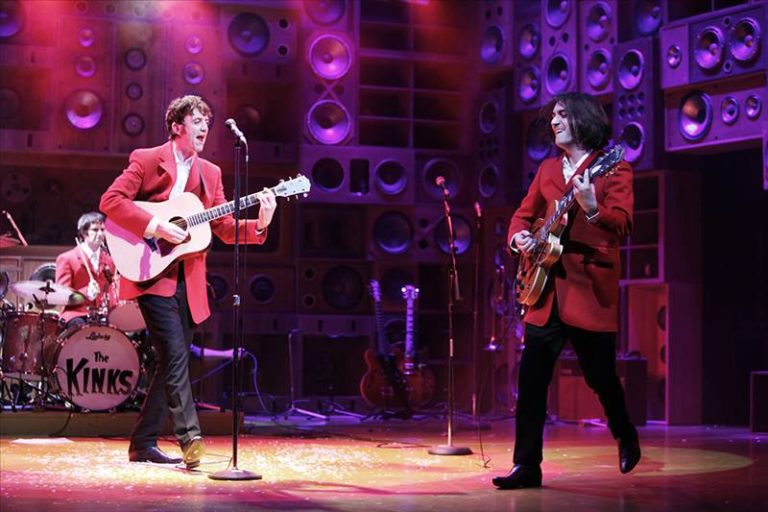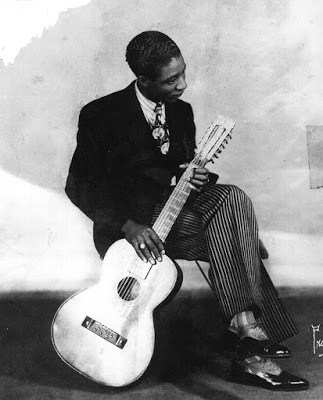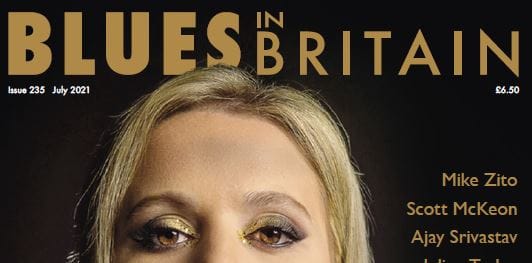Did boogie guitar start with a 14-year-old?
North East Texas. 1899. A tender-aged ‘songster’, as roaming black minstrels were known back then, had travelled from his home in Louisiana around 1899 to busk in neighbouring Texas.
Whether the boy was 10, 11 or 14 depends on which birth date you believe – 1885, 1888 or 1889. All are given in his various biographies, of which there are many – because the boy in question was Huddie Ledbetter, later world famous as the American folk music and blues hero, Lead Belly.
Black songsters influenced Hillbilly music, too

“No Lead Belly, no Beatles”
Lead Belly’s influence on blues, folk and pop music was so enormous, the Beatles’ lead guitarist, the late, great George Harrison, once said, “No Lead Belly, no Beatles”.
This was intrinsically true of most British pop and rock groups who came out of the 1960s. Bands like the Beatles, Rolling Stones, Pink Floyd, Who, Led Zeppelin and even the Bee Gees and Queen. A major influence up all these bands, growing up in 1950s Britain, was Lonnie Donegan and the music genre he popularised: skiffle.
Donegan had huge hits in the UK and USA covering Lead Belly recordings like ‘Rock Island Line’ and ‘Pick a Bale of Cotton’ and other old blues songs by artists such as Josh White.
Lonnie Donegan is even said to have based his skiffle format on the Lead Belly rendition of the old African-American slave song, ‘Ole Riley’. Take a listen . . .
“Lead Belly was THE influence”
So, anyone into music in Britain in the 1950s and 1960s knew about Lead Belly, as did Americans in the 1930s and 1940s. Lead Belly wasn’t simply an influence, as Sir Van Morrison once said, he was THE influence.
The fledgling Lead Belly, Huddie Ledbetter, was living the life of an itinerant ‘musicianer’ in Texas at such a tender age because community outrage and seen him hounded out of his Louisiana village of Mooringsport for getting, if not two girls, at least one girl pregnant. His parents were respectable land owners there and leaving home was the right thing to do – for his parents, that is, if not for the mother(s) of the baby(ies) he fathered.
Such a reason to leave home make me think Lead Belly must have been at least 14 rather than 10 or 11 when he had the lightbulb moment that is the theme of this post. Because it was in Texas that Lead Belly heard his first boogie woogie piano. This was in 1899, he once said.
This infectious form of piano blues was born in the wilderness railway and lumber camps of Piney Woods, North Eastern Texas. The men were so isolated there, laying railroads or cutting lumber, they had to make their own entertainment. Many employers laid on brothels and drinking barns called barrelhouses, because that’s where the barrels of booze were kept. Some employers even provided old upright pianos called tin pans because these were going cheap due to over-supply following the Civil War. And to entertain in the barrelhouses, black pianists began thundering out the first forms of boogie woogie as early, would you believe, as 1872.
“Boogie Woogie was called barrelhouse then”
Lead Belly once said it was also 1899 when he first started using the rolling bass rhythms of the boogie woogie piano in his guitar-playing. He is the first blues guitarist known to have played boogie guitar. “Boogie Woogie was called barrelhouse in those days,” he’s noted as saying.
I’ve just made a video on the transition from Lead Belly to recent-day boogie guitar bands such as Status Quo, T. Rex and ZZ Top. If you check it out, I’d love you to give it a ‘like’. (You know how these things work.)
A final few words on ‘songsters’. American academic, Kevin S. Fontenot, explained the term in a 1988 edition of Tulane’s University’s The Jazz Archivist.
“In 1900 they (songsters) were everywhere.Singing on street corners, in front of circus entrances, or just moving down the dusty roads of the South, playing anywhere a crowd might be cajoled into donating a dime to the cause. To survive they played any request: ballads, popular tunes, white hillbilly music, hymns, and the newly emerged blues. Songsters were the first folk musicians to be ‘professional’. Southern social occasions required a wide variety of music and the songsters strived to fill the need. Essential was the ability to provide a steady dance beat, but on the street corner a sentimental number could bring forth both tears and coins. By the 1930s, however, the songster was becoming a thing of the past, nudged out by an expanding national entertainment industry that reached into the deepest parts of the South. Most songsters faded into the past, few waxed recordings leaving a tempting glance into their world and many questions.”






